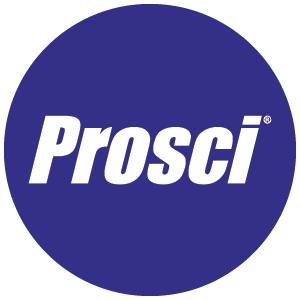M&A Integration Management: Tips for a Successful Transaction

5 Mins
Updated: April 7, 2025
Published: February 3, 2025

Research suggests that 70-90% of acquisitions fail, emphasizing the need for a solid integration approach alongside effective change management in order to realize the intended value. In mergers and acquisitions (M&A), integration management helps minimize resistance and maximize synergy after the transaction. However, change management with strong leadership is needed for people within the merging organizations to adopt the required changes, embrace the "new" organization, and make the merger successful.
In this article, we’ll explain M&A integration management and how leveraging a structured approach helps employees navigate change effectively. Doing so enables the newly combined organization to create value.
What is M&A Integration Management?
M&A integration management combines two organizations to execute strategic objectives like market expansion, technology development, increased efficiency, improved operating models and governance structures, or innovation. A well-orchestrated integration ensures that the combined entity maximizes synergy and leverages a structured approach to align technology, processes, culture and people.
Effective change management is central to integration management. It prepares, equips and supports employees during integration to ensure a successful transition. By focusing on the people side of change, organizations can realize the full value created from the transaction.
Types of M&A integration
M&A integration can be categorized into different types:
- Standalone – The acquirer operates the targeted company independently with minimal functional integrations.
- Targeted – The acquirer integrates specific functions or teams to capture synergies without fully integrating the organizations into a combined entity.
- Full Integration – Merging organizations combine operations, systems and functions to become one.
- Holding Company – The newly gained company integrates with an existing holding company structure as a subsidiary with some operational independence.
- Symbiosis – Companies collaborate to integrate across specific functions while maintaining some separation in operations.
Regardless of type, a merger is always about value creation. The type of integration is a decision that should align with the strategic goals of the merger.
A Successful M&A Integration Management Approach
Integration efforts may fail to deliver the expected value without a robust strategy. A comprehensive M&A integration management approach is the best way to ensure the new company operates as a cohesive unit. Here, we outline best practices to increase the success of an M&A integration.
Develop the merger and acquisition integration strategy
A successful M&A integration strategy begins with clearly defined value drivers and success criteria that align with business goals. Effective integration planning starts well before the transaction is finalized. The vision must articulate the desired outcomes, such as a more aligned leadership structure, governance model or operating model. Other typical results focus on financial performance, synergy targets, operational efficiencies, and cultural alignment. The final vision provides a roadmap for integration efforts.
Without a clear plan, organizations risk losing key talent during the post-merger phase. By establishing what success looks like from the outset, organizations can take a people-focused approach to achieving the deal’s value.
Establish a functional integration team structure
An effective M&A integration requires a cross-functional team to support the integration strategy. Some businesses may need to establish an Integration Management Office (IMO) or a temporary team to oversee and manage the integration following a merger or acquisition. This team brings together functional areas and should include the change management function for the best results.
Forming a dedicated integration team that includes members from both organizations ensures equal representation and inclusivity. Key roles include:
- Change manager or change practitioner – Responsible for managing the people side of the integration to ensure high levels of adoption
- Project manager or project management team – Responsible for leading the technical aspects of the integration
- Cross-functional representatives – A group of chosen representatives from key functions like HR, IT, finance, and operations who are responsible for ensuring comprehensive coverage of integration needs
Engaging executives and leaders is also necessary for achieving successful change. Strong leadership is crucial for maintaining business stability during integration. Leaders should actively engage in the integration process, communicating the vision and addressing concerns and resistance.
When considering the integration team structure, the following core roles must take part:
- Primary sponsor – An executive or senior leader from either organization who champions the integration and is accountable for its success
- Sponsor coalition – A group of leaders from both organizations who support the integration efforts and communicate directly with their teams
- People managers – Perform the roles of Communicator, Liaison, Advocate, Resistance Manager and Coach (CLARC) with their teams to contribute to successful integrations
Define a structured integration plan
The Prosci 3-Phase Process is one of the three main components of the Prosci Methodology. It’s a structured and adaptable approach to achieving change at the organizational level. It helps you create clear success criteria for the new entity’s operations and culture, such as how soon teams adopt cultural changes or accept the direction of new leaders.
Prosci 3-Phase Process
Phase 1 – Prepare Approach
Clearly defining success, impacts on people, and the strategy at the start of the initiative is critical. Understanding each company’s culture and work styles before starting integration activities also ensures that integration efforts are inclusive and meet each organization's needs.
From a functional perspective, you can perform a gap analysis to identify and address disparities between the merging organizations. Understand how each company works, management practices, and working norms across each functional business area.
Equally important is knowing how to assess cultural differences and developing strategies to bridge them. Strategies to align cultures include:
- Delivering workshops to foster understanding and collaboration
- Holding engagement sessions to gather employee feedback on the cultural integration
This information helps you identify gaps between work styles and cultures while involving employees in the integration process to move them through the change successfully.
Phase 2 – Manage Change
This phase involves creating and implementing plans that move individuals and the organization through ADKAR® transitions and then monitoring progress.
For example, effective communication is critical during mergers and acquisitions. A robust communication plan includes key messages, preferred senders, channels (town halls, newsletters, company intranet), and the frequency of updates.
In addition to the communication plan, creating a training plan ensures employees will be equipped with the knowledge and ability to fulfill their roles. In M&A, this would include role-specific training and change management training for leaders and managers to leverage.
As the M&A integration progresses, tracking performance and using metrics to assess progress allows the team to identify areas for improvement. Incorporating feedback mechanisms, such as regular check-ins and surveys to gather employee feedback, generates additional opportunities to improve the M&A integration strategy.
Phase 3 – Sustain Outcomes
The final phase supports the integration's long-term success by embedding changes into the organization’s culture and operations. Continuous communication about the integration's benefits, recognition of milestones and successes, and celebration of successes ingrain the changes in the combined organization. Continuing to discuss and celebrate successes reinforces synergies, and other results and outcomes for the long term.
Challenges in M&A Integration Management
M&As are pivotal for organizations and present many challenges. By taking a structured approach to change management, organizations mitigate risks and harness the full potential of the merger or acquisition by addressing cultural resistance, executive misalignment and communication gaps.
Cultural resistance
Resistance is a normal reaction to change, but cultural resistance poses a significant risk to achieving the merger's objectives and can lead to a failed integration. Organizational differences, including processes, technology and culture, can lead to employee resistance and hurt morale. Businesses without a structured integration plan increase the risk of failing to identify and address resistance. The key is to keep employees involved and heard throughout the process and address resistance early on.
Executive misalignment
When leaders from the acquiring company and integrated organizations are not aligned on priorities, strategy or vision, it creates confusion and conflict. Executive alignment ensures that key decisions during integration are made quickly and effectively. A structured change management approach helps facilitate a unified strategic vision and visible executive sponsorship.
Communication gaps
Prosci research shows ineffective communication between leaders and employees can cause obstacles during change initiatives. A lack of clear and consistent communication increases the risk of employee disengagement and affects the merger's potential to realize value. Structured communication plans help you deliver clear, timely messages and gather feedback, maintaining alignment and engagement during the integration.
Prosci Methodology for M&A Integration Management
The structured Prosci Methodology is a proven approach to managing changes in M&A. It is a comprehensive framework that comprises the Prosci ADKAR Model, PCT Model, and Prosci 3-Phase Process. This systematic approach helps organizations manage M&A complexities with a clear roadmap for change.
For example, we used the Prosci Methodology to help UKG with a massive system integration project following a merger. This enabled them to apply change management to transform business operations. The UKG team continues to use the Prosci Methodology to bring other strategic initiatives to life.
Another notable example is Prospera Credit Union. This newly merged credit union adopted the Prosci Methodology to equip the organization to create a culture of change. Eight employees attended the Prosci Change Management Certification Program, and Prospera established an organizational change team to support their change-ready culture.
Unlock the Potential of Your M&A With Prosci
M&As are necessary for organizations to position themselves for sustained success. However, successful M&As depend on effective change management. Integrations that follow a structured approach, like the Prosci Methodology and 3-Phase Process, equip organizations to achieve the business value they need from a merger or acquisition.


